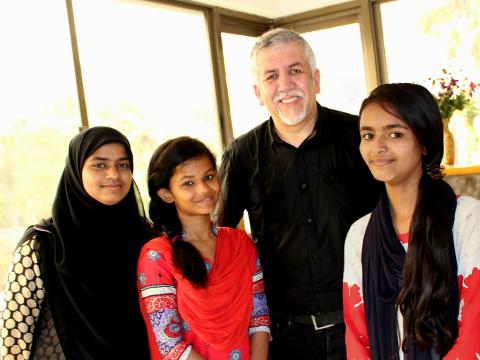Girls’ inequality: a gap that needs to be filled

By Patricio Cuevas-Parra, Senior Policy Adviser, Child Participation and Rights, Advocacy & Justice for Children, World Vision International.
As we observed the International Day of the Girl Child on October 11, I was reflecting on my recent trips to Sri Lanka, Bangladesh and Jordan where I met extraordinary groups of girls who were trying to make a difference in their lives. They were articulate, confident and empowered. However, when digging down into their lives and experiences, I was confronted by the enormous gap between the freedom they have in their activities and groups they are a part of, and the limitations they face in their everyday lives, characterised by exclusion and disfranchisement.
By marking the International Day of the Girl Child, the international community acknowledges the challenges that girls face across countries and regions, and reinforce the importance of their human rights. This day is a call to reflect on these issues and to take action to end discrimination and violence against girls.
It is critical to recognise girls’ issues as a matter of priority. Boys and girls are not a homogenous group as they face a diversity of experiences and social inequalities. The risk of referring to children as a homogenous group make girls invisible and confine them to a single category, affecting particularly those who are from a vulnerable population and with less access to power due to entrenched patriarchal norms.
Girls from Sri Lanka shared they are often expected to follow certain patterns of behaviours according to their gender, and they feel they are less favoured than the boys. As we discussed gender biased practices, they realised that many beliefs reinforce exclusionary attitudes in their communities, and violence against girls was perceived as a consequence of those views.
In Bangladesh, girls told me that gender discrimination creates unbalanced power relations and has a huge impact on girls' interactions with their families and peers. They expressed that the abuse that many girls experience is often not recognised as a problem, especially when it comes to child marriage. The young girls were very clear about the harmful consequences of child marriage, but they pointed out that, unfortunately, most of the girls do not have a right to express their opinions or feelings about marriage.
As World Vision launches its new global campaign to end violence against children, we need to take this opportunity to reflect on how to use a gender lens to analyse power and inequality, and to find sustainable approaches to challenging and transforming rigid traditional and discriminatory social norms affecting girls. The campaign should also intentionally encourage girls to actively participate in creative solutions to the barriers they face and provide them with the spaces to contribute to reconstructing gender equality where they live and grow.
The girls from Sri Lanka and Bangladesh showed me that they want to contribute to a change, and they are capable of making a difference despite the limitations they face. The International Day of the Girl Child gives us an important occasion to stand up for these girls and support them in having a greater voice and more spaces for participation in their fight for equality, non-discrimination and ending violence against children.